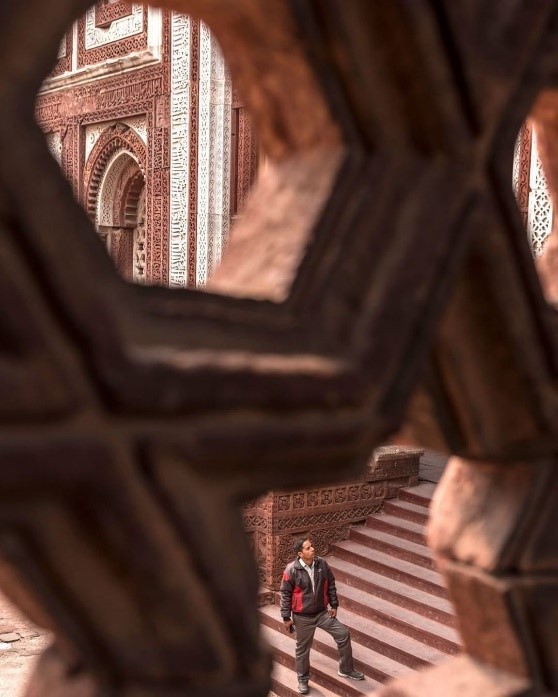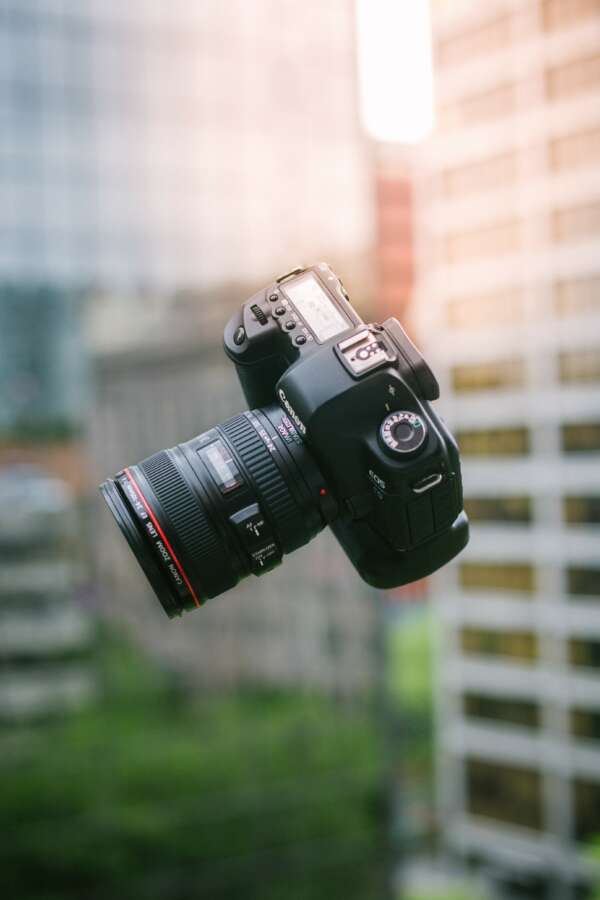“As a kid, I was always fascinated by the art of photography. I remember taking my dad’s film camera and running around to take pictures. Each shot had a cost, so I learned to be careful, to choose my subjects wisely, and to compose each shot thoughtfully. At first, I was drawn to nature and landscapes, intrigued by the way the sun could transform the environment around me. I would spend hours looking for that perfect shot.”
As he grew older, Purnesh’s passion for photography only intensified, leading him to pursue it more seriously. Today, Purnesh Nikhanj is an award-winning architecture photographer with a keen eye for capturing the beauty and essence of buildings through his lens.
“It wasn’t until I joined architecture college that I found my true calling. The college required me to photograph structures, to document them for future study. I was immediately struck by the way that buildings could be transformed into art through the lens of my camera.”
Do you ever find yourself gazing up at a skyscraper, wanting to capture all the intricate details? Or perhaps you’ve been drawn to the beauty of an old temple, enhanced by the ever-changing natural light around it. If so, then these deep insights by Purnesh Nikhanj might really help you become an architecture photographer.
Advice for Beginners
“If you’re just starting out in architecture photography, my advice is simple: take whatever camera you have available and start clicking pictures. Don’t worry about having the latest and greatest equipment or trying to capture the perfect shot every time.”, says Purnesh.
“Instead, focus on capturing images that speak to you, that satisfy you in the moment of taking the picture. If you’re not happy with a shot as you’re taking it, there’s no point in trying to fix it with fancy software later. The most important thing, though, is to have a desire to create art.”
It’s not just about technical skills – it’s also about finding what inspires you, and finding new ways to bring out the magic of the structures you’re photographing.
“When I look at architecture set around nature, I feel inspired because it’s a beautiful combination of two contrasting elements. It’s amazing to see how architects have managed to seamlessly integrate the built environment with the natural environment. Minimalist forms of architecture also appeal to me, as they showcase the beauty of simplicity and restraint. However, everyone has their own unique outlook, and it’s important to find what really inspires you.”
So go out there, experiment, and let yourself be inspired by the beauty of architecture all around you. Who knows – you just might discover your true calling along the way.
The Importance of Developing an Eye for Architectural Compositions

“While it’s true that doing a course in architecture can help you deepen your understanding of the subject, it’s important to remember that having a natural aptitude for architecture photography is just as important. For me, I always had an intuitive sense of architectural compositions, even before I joined architecture college. It’s not something that can necessarily be taught – it’s more of a way of seeing, a way of being able to truly appreciate the beauty of the structures around us.”
So, if you’re just starting out, don’t worry too much about formal education – focus instead on honing your instincts and developing a deep love for the beauty of architecture all around us. This involves paying attention to the buildings and structures around you, observing how they are designed and constructed, and thinking critically about what makes them interesting (or not).
You can start by taking walks around your city or town and really looking at the buildings you pass by. Notice the different styles of architecture, the way different materials are used, and the ways in which different buildings interact with their surroundings. Try to identify what you like and don’t like about each building and think about why.
Over time, as you continue to observe and think critically about architecture, you will develop a more intuitive sense of what works and what doesn’t. The rest will come naturally, with time and practice.
Essential Gear For Your Professional Journey

Once you have the necessary skills, it’s time to invest in the right equipment. A full-frame camera with the right mix of wide and telephoto lenses is ideal for capturing stunning architectural photos.
“An entry-level full-frame camera – Canon 6D – was my companion during most of my professional journey. My go-to lens for most architecture shoots is my trusty 16-35mm lens – it has a wide to medium telephoto range that covers most of my requirements, allowing me to capture sweeping shots of entire buildings or zoom in slightly to focus on specific details. But sometimes, I need to get up close and personal with a particular feature of a structure, and for those situations, I turn to my 70-100mm lens.”
“Of course, even with the right lenses, there are still challenges when it comes to photographing architecture – When you point your camera up at a tall building, for example, the vertical lines of the building will appear to converge towards the top of the frame. This effect is known as perspective distortion, and it can be corrected using the tilt function of a tilt-shift lens. The tilt function allows me to manipulate the angle of the lens relative to the camera’s sensor, ensuring that I get the perfect shot every time.”
A tilt-shift lens will help you control the plane of focus in the image. This can lead to interesting and unique perspectives in architectural photography, as you can choose which parts of the image are in focus and which are blurred or softened. It allows you to manipulate the depth of field and create a sense of three-dimensionality in the image, which can add to the overall visual impact. But this requires a lot of practice as it is very easy to overdo it and end up with an unnatural-looking image.
You also need a sturdy tripod to keep your camera steady and a remote shutter release to minimize camera shake. Additionally, filters like polarizers and neutral density filters can help you control reflections and exposure, allowing you to capture more nuanced and balanced images.
Marketing Yourself as an Architecture Photographer
When it comes to being a successful architecture photographer, marketing yourself is absolutely essential. In my early days, I used to send my photos to local magazines, hoping to get noticed by editors and publishers. But these days, the best way to showcase your work is through social media – especially Instagram. By building a strong presence on the platform, you can attract a large following of like-minded people who share your passion for architecture and photography.”
“Of course, it’s not enough to just post pictures and hope that people will find you – you also need to have a solid portfolio website that showcases your work in a professional and compelling way. This is your chance to really show off your skills as a photographer, highlighting your best shots and giving potential clients a sense of your style and approach to the craft.”
But marketing isn’t just about putting yourself out there – it’s also about making connections with other photographers and industry professionals. Whether it’s a local meet-up or a larger conference, these events are a great way to meet new people, share your work, and get feedback from others in the industry. Who knows – you might just meet your next collaborator or client at one of these events!
With a strong passion for creating art, anyone can start on this journey towards capturing the magic of architecture through their lens. So go out there, explore, experiment, and share your work with the world – you never know who might be inspired by your unique perspective and vision. Let your passion for photography and architecture guide you towards a fulfilling and rewarding career or hobby.






